Remember those school cafeteria days when mystery meat and questionable casseroles ruled the lunch line? School lunches from decades past featured some truly bizarre offerings that would make today’s kids run for the hills. Before farm-to-table and nutritional guidelines became standard, school cafeterias served up some truly memorable (and sometimes terrifying) meals that have become the stuff of generational legend.
1. Mystery Meat in Gravy
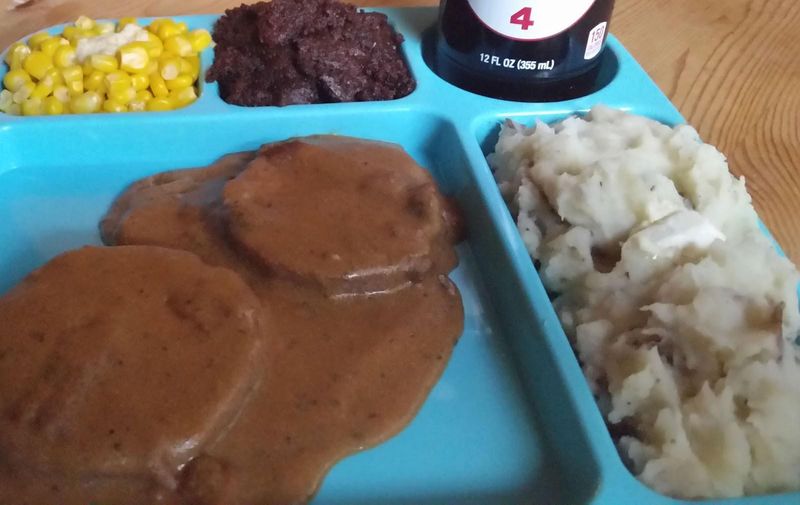
The infamous mystery meat haunted cafeteria trays nationwide for generations. This gelatinous brown slab arrived smothered in salty gravy, its origins unknown and unquestioned by cafeteria staff. Students developed theories ranging from ‘government surplus’ to ‘recycled shoe leather.’
Served alongside instant mashed potatoes with the consistency of wet cement, this culinary question mark often required vigorous sawing with a plastic spork. The meat’s rubbery texture and uniform shape defied identification – was it beef? Pork? Something else entirely?
Most kids simply drowned it in ketchup and hoped for the best. School districts defended the nutritional value while parents shuddered at their children’s lunchtime stories. The mystery meat remains a shared trauma for anyone who attended public school before the 1990s.
2. Cheese Zombies
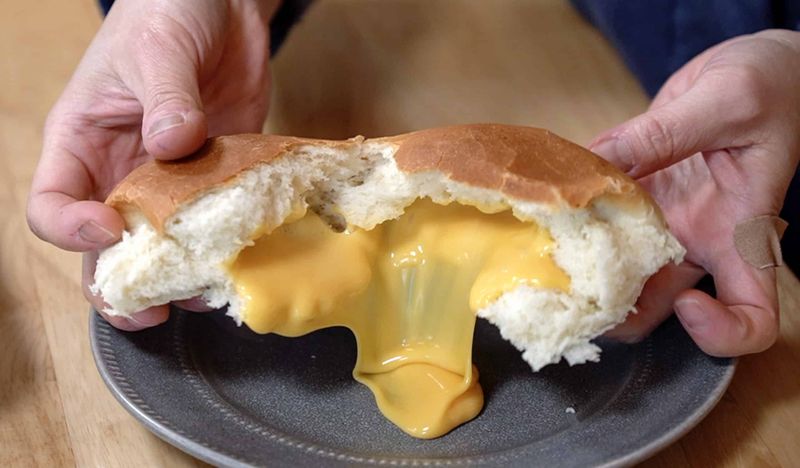
Originating in Washington state schools in the 1950s, Cheese Zombies were the stuff of cafeteria legend. Imagine a thick, doughy rectangle with processed American cheese melted inside – not quite a grilled cheese, not quite a calzone, but something uniquely school-lunch weird.
Cafeteria ladies would prepare massive sheets of these dense bread pockets, cutting them into squares that landed on plastic trays with a thud. The exterior often turned greasy and slightly crisp while the interior featured a pocket of molten processed cheese that could burn the roof of your mouth if you weren’t careful.
Despite their strange name and appearance, Cheese Zombies maintained surprising popularity. Many West Coast adults still reminisce about these cheesy carb bombs that fueled countless playground adventures and afternoon classes.
3. Tuna Surprise
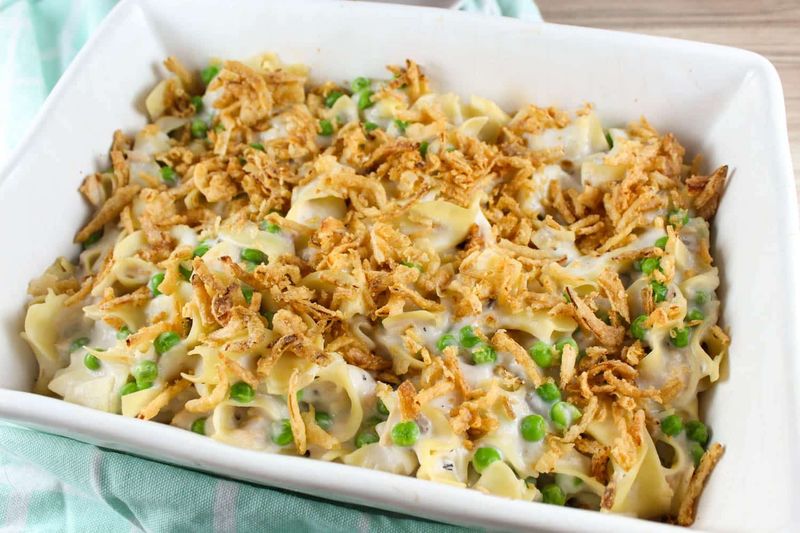
The ‘surprise’ in Tuna Surprise wasn’t pleasant – it was discovering what odd ingredients cafeteria staff had mixed with canned tuna this time. This hot casserole combined fishy tuna with mushy peas, overcooked egg noodles, and cream of mushroom soup into a bubbling pan of questionable nutrition.
Served steaming hot with a crusty topping of crushed potato chips or congealed American cheese, the dish emitted an aroma that permeated hallways long before lunchtime. The texture ranged from soupy to oddly gelatinous, with the tuna flavor amplified by hours in warming trays.
Budget-friendly and packed with protein, administrators loved it while students traded away their portions for almost anything else. The dish appeared most frequently on Fridays, becoming a dreaded end-of-week tradition that had kids mysteriously developing stomachaches by noon.
4. Turkey Loaf
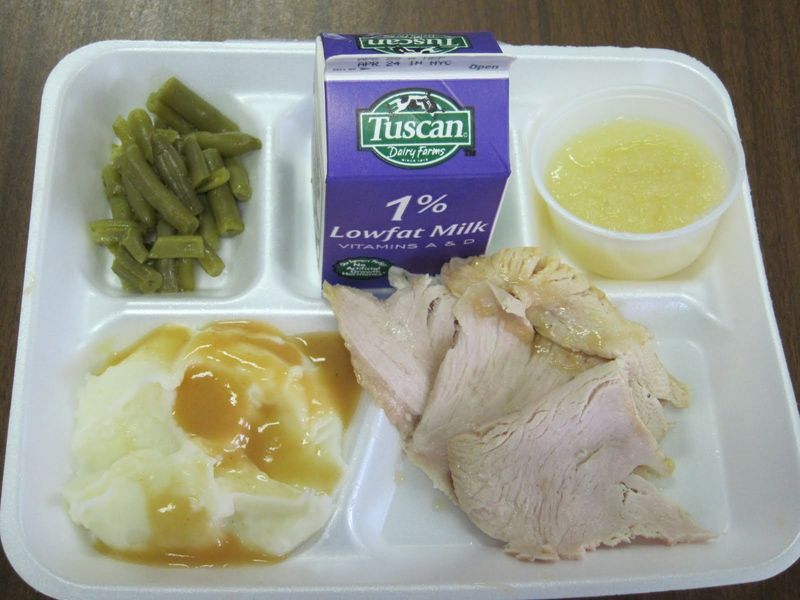
Long before turkey became a trendy lean protein, schools served the dreaded Turkey Loaf – a processed meat product that bore little resemblance to an actual bird. This pale beige monstrosity arrived in perfect slices, the uniformity alone suggesting something unnatural was afoot.
The texture veered between rubbery and grainy, with mysterious white bits throughout that no one dared identify. Swimming in a pool of translucent gravy that congealed if left too long, Turkey Loaf represented government surplus at its most questionable.
Cafeteria workers insisted it was ‘just like Thanksgiving,’ though no family dinner ever featured meat so perfectly rectangular. Students developed creative disposal methods, from napkin wrapping to strategic placement under mashed potatoes. The loaf’s staying power on menus stemmed from its long shelf life and bargain price rather than culinary merit.
5. Canned Spaghetti with Hot Dogs
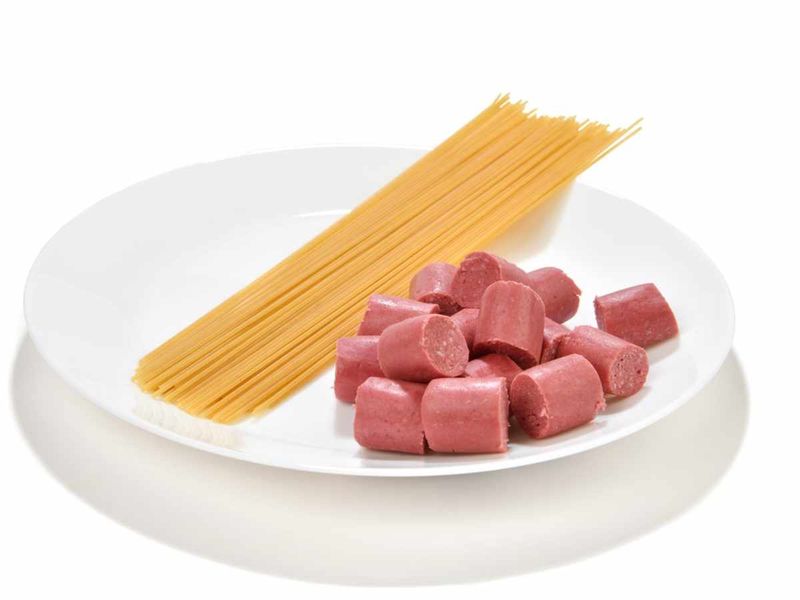
When budget constraints met nutritional requirements, canned spaghetti with hot dogs emerged as a cafeteria staple. This culinary shortcut featured limp, overcooked pasta drowning in a thin, metallic-tasting tomato sauce that bore little resemblance to anything Italian.
Floating throughout this orange-red sea were pale, rubbery slices of hot dogs – not even whole franks, but sad circular pieces cut with industrial precision. The dish arrived lukewarm, with the pasta having absorbed too much liquid during its long stint in industrial-sized warming trays.
Kids ate this concoction with spoons rather than forks, highlighting its soupy consistency. The meal represented school lunch economics at work: cheap, filling, technically containing protein and vegetables (tomatoes count, right?). Some schools attempted elevation by adding a sprinkle of government-issued powdered parmesan, fooling absolutely no one.
6. Boiled Cabbage and Wiener Slices
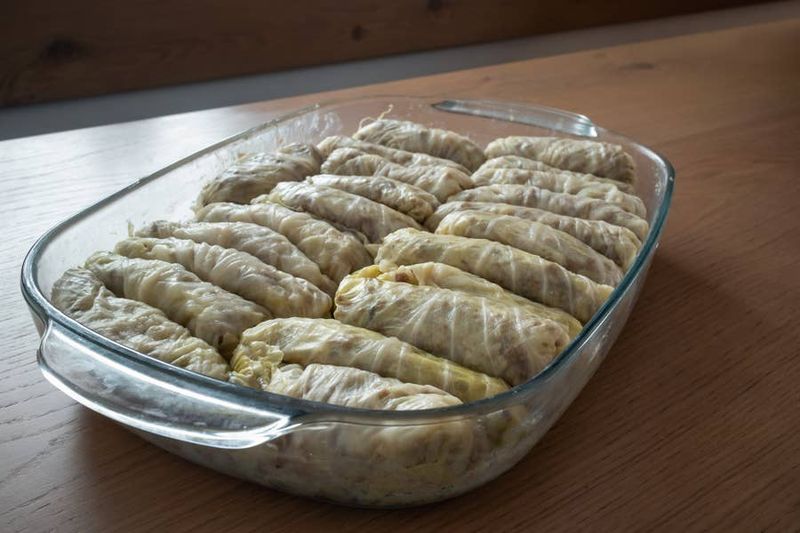
A Depression-era recipe that somehow survived into the school lunch program for decades, boiled cabbage and wiener slices represented cafeteria food at its most basic. Limp, grayish-green cabbage leaves swam alongside pale hot dog coins in a watery broth that smelled like wet gym socks.
The dish’s pungent aroma would announce itself long before lunchtime, wafting through hallways and classrooms as a warning of what awaited hungry students. Nutritionists defended it as providing vegetables and protein while administrators appreciated its rock-bottom cost per serving.
Regional variations sometimes included potatoes or carrots, though these additions did little to improve the overall experience. Children would hold their noses while eating or strategically plan absences on days it appeared on the menu. The dish finally faded from rotation in the 1980s when schools began competing with fast food for student appetites.
7. Peanut Butter and Mayonnaise Sandwich
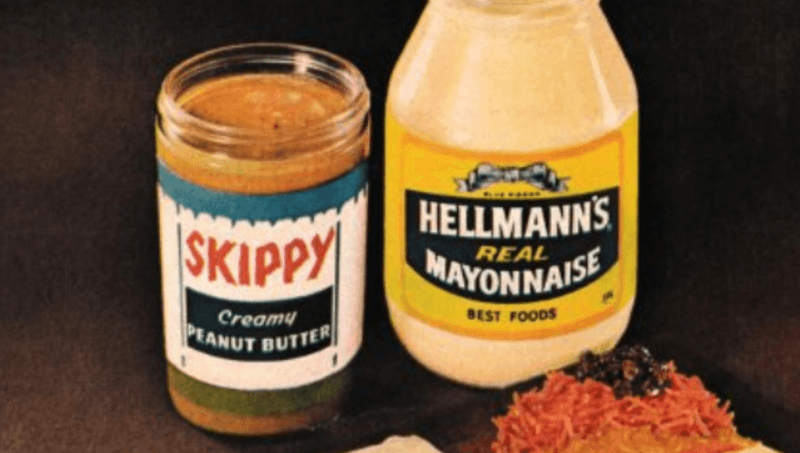
Before peanut allergies and nutritional awareness, the peanut butter and mayonnaise sandwich somehow made it onto school lunch menus across America. This bizarre combination spread thick, gloppy peanut butter on one slice of white bread and mayonnaise on the other – sometimes with a bonus layer of iceberg lettuce for “freshness.”
Popular from the 1930s through the 1960s, this sandwich represented the strange food combinations that emerged during times of rationing and limited options. The mayo supposedly made the peanut butter less sticky, while adding a tangy creaminess that divided student opinions sharply.
Regional variations included banana slices or pickle relish, making an already questionable sandwich even more confounding. Modern kids would be horrified by this strange pairing, yet it represents a fascinating snapshot of changing American food preferences and the evolution of what we consider normal lunchtime fare.
8. 8. Instant Mashed Potato Scoops
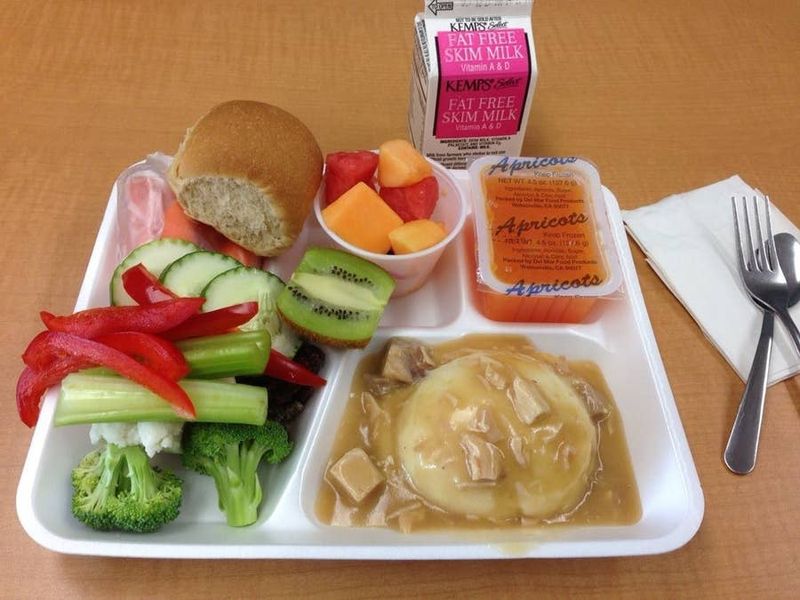
The perfect ice cream scoop shape was the only appetizing thing about instant mashed potato domes. Cafeteria workers would reconstitute powdered potatoes with hot water, whip them into submission, then deploy ice cream scoops to create unnaturally perfect spheres of starchy disappointment.
These potato mountains featured a texture somewhere between paste and foam, with a flavor profile best described as “vaguely potato-adjacent.” The exterior would form a slight skin while sitting under heat lamps, while the interior maintained a gluey consistency that stuck to the roof of your mouth.
Students quickly learned these potatoes worked better as modeling clay than food. Creative kids built small sculptures before eating or, more commonly, discarding them. The scoops were remarkably identical day after day, year after year – a testament to American food manufacturing if not culinary excellence.
9. Corn Dog Nuggets in Mystery Sauce
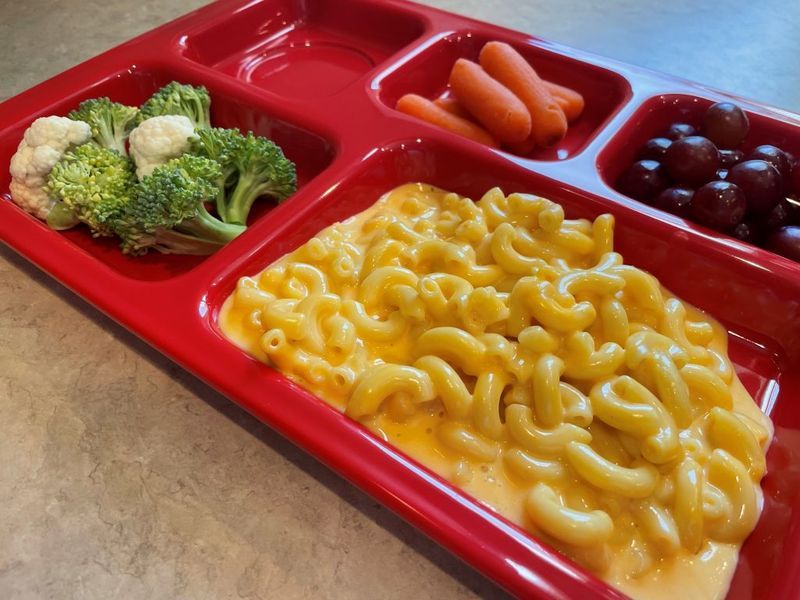
When regular corn dogs seemed too straightforward, cafeterias introduced corn dog nuggets – bite-sized pieces of hot dog encased in sweet cornbread batter, deep-fried to questionable doneness. These greasy nuggets typically arrived swimming in a mysterious orange-red sauce that wasn’t quite ketchup, wasn’t quite sweet-and-sour, but something uniquely cafeteria-created.
The nuggets themselves varied wildly in quality. Some contained recognizable hot dog pieces while others seemed filled with an unidentifiable pink protein substance. The outer coating ranged from crispy to soggy, depending on how long they’d been sitting in the steam table’s warming tray.
Served alongside equally suspicious tater tots, this meal represented peak processed food engineering. Despite their dubious quality, these nuggets remained surprisingly popular with students who appreciated any deep-fried option amid the usual cafeteria suspects.
10. Liver and Onions
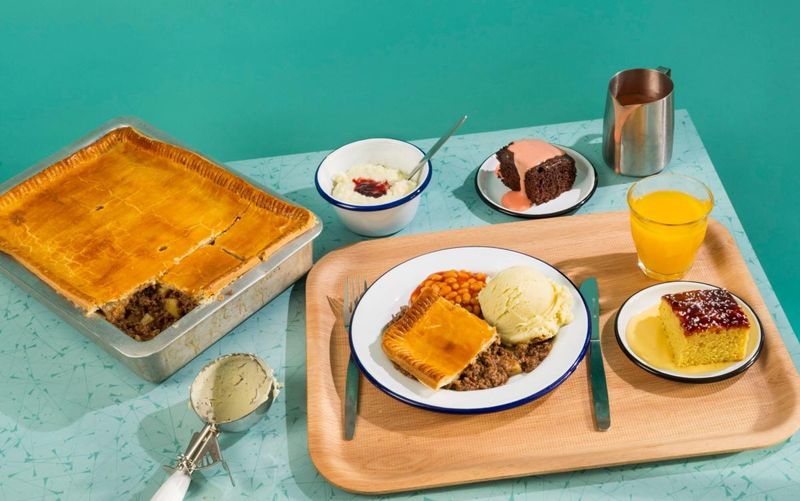
Possibly the most dreaded cafeteria meal of all time, liver and onions represented the pinnacle of forced nutrition over culinary enjoyment. Thin slices of beef liver, overcooked to gray-brown toughness, arrived alongside pallid, translucent onions that had been steamed into submission.
The liver’s strong, metallic flavor and chewy texture made it the perfect childhood food trauma. Students would devise elaborate methods to dispose of this meal, from strategic napkin wrapping to unauthorized feeding of nearby plants or pets. The distinctive aroma alone could empty a cafeteria table faster than a fire drill.
School nutritionists defended the iron-rich meal while administrators appreciated its low cost. By the 1980s, most schools had abandoned liver from rotation as student participation plummeted on liver days. Today’s children would be utterly bewildered by the idea of being served organ meat for lunch.
11. Sloppy Joe Slop
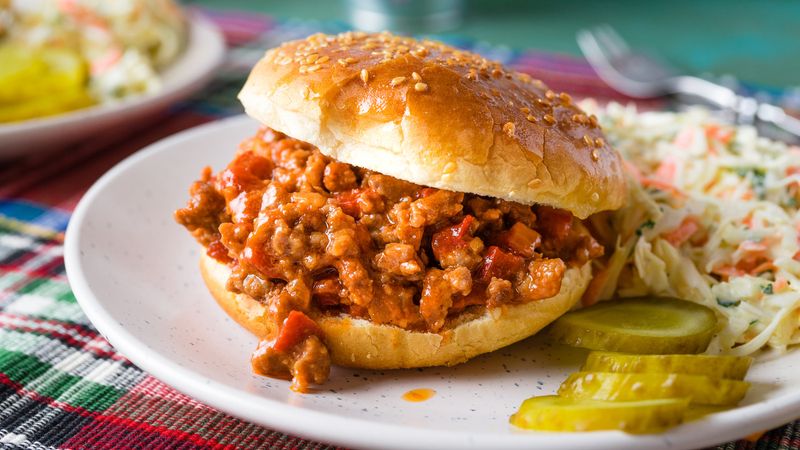
The cafeteria version of Sloppy Joes took a simple concept and transformed it into a textural nightmare. Ground mystery meat (or textured vegetable protein during budget cuts) swam in a sweet-tangy tomato sauce that varied wildly between watery and paste-like, never achieving the proper consistency.
Served on cheap hamburger buns that disintegrated upon contact with the wet filling, these sandwiches lived up to their “sloppy” name. Eating required strategic planning and multiple napkins. The meat mixture often contained visible chunks of green pepper and onion – added more for budget stretching than flavor enhancement.
The sweetness level varied dramatically between schools, with some versions tasting more like dessert than main course. Despite their structural challenges, Sloppy Joes remained a cafeteria staple for decades, representing the perfect intersection of cheap, filling, and marginally acceptable to most students.
12. Fruit Cocktail with a Single Maraschino Cherry
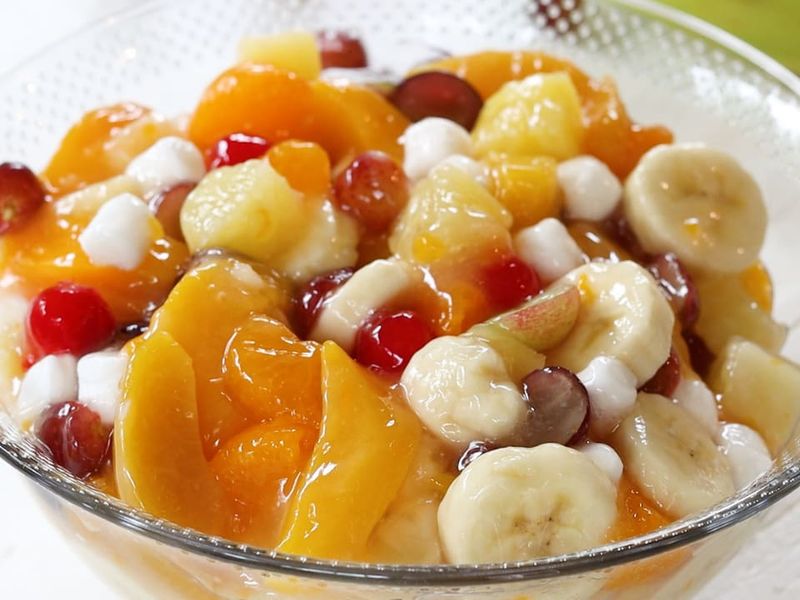
The pinnacle of cafeteria “dessert” was the infamous fruit cocktail cup – a sad collection of mushy canned fruit swimming in heavy syrup. The hallmark of this underwhelming treat was the single, artificially bright red maraschino cherry carefully placed on top, like a sad garnish of false hope.
The fruit mixture featured pale pear cubes, mushy peach segments, and those mysterious white grapes that seemed to exist only in canned fruit cocktail. The syrup created a tooth-achingly sweet liquid that pooled at the bottom of the small paper cup, often soaking through by meal’s end.
Cafeteria workers took surprising pride in the cherry placement, ensuring each student received exactly one – no more, no less. This dessert represented the bare minimum effort to provide something sweet while technically counting as a fruit serving. Today’s kids, accustomed to fresh fruit options, would be mystified by this syrupy concoction.
Leave a comment